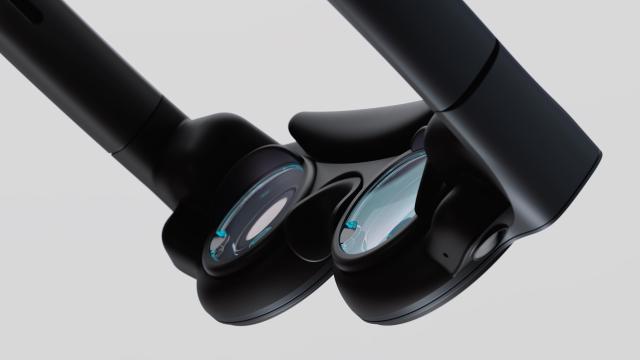“Magic Leap” is like the Bloody Mary of the virtual reality wearables space. Say the name three times in front of a mirror (or while wearing a pair of VR goggles), and suddenly the company notorious for big AR hype is back in the light of day. This time, Metaverse evangelist Meta is cozying up to Magic Leap to get its hands on some of the company’s visual tech, all ahead of Apple’s expected headset announcement early next month.
According to a Monday report from the Financial Times based on several anonymous sources close to the discussions, Meta has been trying to partner with Magic Leap to access some of its proprietary components like its approach to waveguide tech, used for creating visuals on a pair of AR glasses. These talks apparently do not include building any new device together, but any deal for new AR cross-pollination would be a boon to both companies, which have struggled to make a case for their virtual reality ambitions.
After establishing itself in 2010, Magic Leap has become known for acquiring $US2 ($3) billion in investment to manufacture ultra-expensive, ultra-hyped, and inevitably underdelivering AR goggles. The $US3,300 ($4,581) Magic Leap 2 finally arrived in the middle of last year and was obviously geared more towards businesses and enthusiasts. The company had originally explored a sale back in 2020, at one point reportedly courting Facebook (a year before the name change to Meta) for a buyout.
In the meantime, Meta has also been spending ungodly amounts of money on its so-called Metaverse ambitions to the tune of close to $US1 ($1) billion per month, all while trying to cut down on costs by firing thousands of employees, including from the company’s reality labs division.
Gizmodo reached out to Meta for comment, but we did not immediately hear back. We also didn’t hear back yet from Magic Leap, but that company told FT it is always exploring potential partnerships. The company’s CEO Peggy Johnson wrote a blog post last September alluding to “interest” in their IP from outside companies.
But beyond its current loss-leading forays into virtual reality tech with its Quest headset series, Meta has far greater AR ambitions for the next few years. A recently leaked roadmap from the company’s Reality Labs division noted Meta wants to come out with “smart glasses” in 2025 and fully-functional AR glasses by 2027. Those codenamed “Orion” glasses have been in development for nearly a decade and are supposed to create AR hologram-like visuals on real-world objects. On the flip side, Meta has been experimenting more with passthrough technology — essentially cameras on the outside of its headsets — to enable potential mixed reality capabilities.
This news comes just as Apple is set to release its own headset device that’s supposed to combine both AR and VR features. This “Realty” headset is expected to cost around $US3,000+ ($4,165) ($4,165) and will likely define the company’s WWDC conference in June. While Magic Leap is specifically geared toward enterprise, it’s unclear if Apple’s device will also try to incentivise its loyal consumer fan base to shell out several month’s rent to get their hands on Apple’s new “reality.” Still, if Meta is looking to one-up its big tech rival, it may be looking to advance its own reasons why somebody would want to buy a $US3,000+ ($4,165) ($4,165)+ device.
For slim, lightweight AR glasses, one of the hardest hurdles to crack has been creating small, high-quality displays. Magic Leap 2 goggles use waveguide functionality, much like Microsoft’s Hololens, to bend and manipulate light. Other companies are working to make waveguide usable on regular glasses frames, and though we’ve been impressed with the image quality on these beta devices, there are still plenty of processing and power consumption constraints to overcome.
Want more of Gizmodo’s consumer electronics picks? Check out our guides to the best phones, best laptops, best cameras, best televisions, best printers, and best tablets. If you want to learn about the next big thing, see our guide to everything we know about the iPhone 15. Click here to save on the best deals of the day, courtesy of our friends at The Inventory.
Editor’s Note: Release dates within this article are based in the U.S., but will be updated with local Australian dates as soon as we know more.
